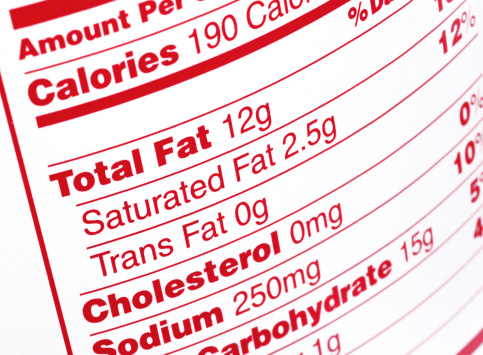Give nutrition labels a proper read to boost your health, expert says

When shopping for healthy food, reading nutrition and ingredient labels can feel like you’re wading through uncharted territory without a map. In fact, according to a 2012 Nielsen survey conducted worldwide, more than half of consumers struggle to understand nutrition labels. And 78 percent of the 25,0000 respondents from 56 different countries were hoping to make dietary changes to lose weight.
Shopping for food that contributes to a healthy diet doesn’t have to be so difficult. Jaclyn Sprague, manager of nutrition services at Advocate Illinois Masonic Medical Center, explains that looking for certain key things can make the task more manageable.
Here are her five recommendations for how to navigate labels when shopping for healthy items in the grocery store.
1. Avoid trans fats.
A trans fat is a fancy name for man-made fat. It’s found in things like stick margarine, shortening and packaged foods. Sprague says that trans fats or partially hydrogenated oils increase LDLs or low-density lipoproteins and decrease HDLs or high-density lipoproteins, which makes them bad for your cholesterol levels.
LDLs are the so-called bad cholesterol, known to block blood vessels and may increase your risk of a heart attack if they increase. HDLs are the so-called good cholesterol, removing “bad cholesterol” from places where it doesn’t belong, helping to reduce your risk of heart disease. However, if levels of HDL are too low, then your heart disease risk increases.
She adds that even though most companies have taken trans fats out of products, it’s still important to make sure you check the labels.
2. Understand what “sugar-free” means.
“Sugar-free does not mean carbohydrate-free,” Sprague says. “Sugar is a type of carbohydrate. Carbohydrates come in a variety of forms including sugar, complex carbohydrates and fiber. Carbohydrates are the preferred source of energy for our bodies,” she says.
“If you just look at sugar alone, you may be missing out on fruit and milk, which are carbohydrates in the form of a natural simple sugar,” adds Sprague.
It’s also important to be aware that hidden sugars exist in food called sugar alcohols, which contain carbohydrates but don’t include sugar, she explains.
Sprague says beware of sugar alcohols named sorbitol, xylitol and mannitol, and look at total carbohydrates on labels, and not just the sugar.
Learn more about hidden sugars on beverage labels.
3. If you can’t pronounce it…
The longer ingredient lists are, the more complicated they tend to be. So Sprague recommends that you stick with short ingredient lists. “The shorter, the better,” she says. Always look for recognizable ingredients, and if you have no idea what an ingredient is, you may want to steer clear of it. The adage of, “If you can’t pronounce it, it’s best not to eat it,” may apply here.
Sprague says also be aware that food ingredients are listed in order by weight, so the first ingredient that appears in the list occurs the most in the product. So, for example, if sugar is listed first, she says, sugar is the greatest ingredient in that product.
4. Serving size matters.
One thing that Sprague emphasizes is how important it is to look at serving size. “When you look at a label, one of the most important things is serving size and how many servings are in the container,” says Sprague.
“The number on the label of calories and fat are per serving so you have to be aware of what the serving size is,” she says. A normally healthy snack can quickly become unhealthy if you don’t look at the serving size and take in too many calories, she explains.
5. Check for updates.
Even though you may buy the same foods all the time, Sprague recommends that you still examine the label to make sure the ingredient list and nutrition information has not changed.
Labels are not the only thing that can sabotage healthy eating. Sprague suggests that when you go shopping, shop the perimeter of the store, where things like fresh meat products, dairy and produce are. “Go with what you can get from the perimeter first, and spend less time in the middle, where the packaged food is,” says Sprague.
She also suggests that you make a list before you go grocery shopping so you have a plan of attack and avoid impulse buys at the checkout stand.
Related Posts
Comments
About the Author
health enews staff is a group of experienced writers from our Advocate Health Care and Aurora Health Care sites, which also includes freelance or intern writers.

















